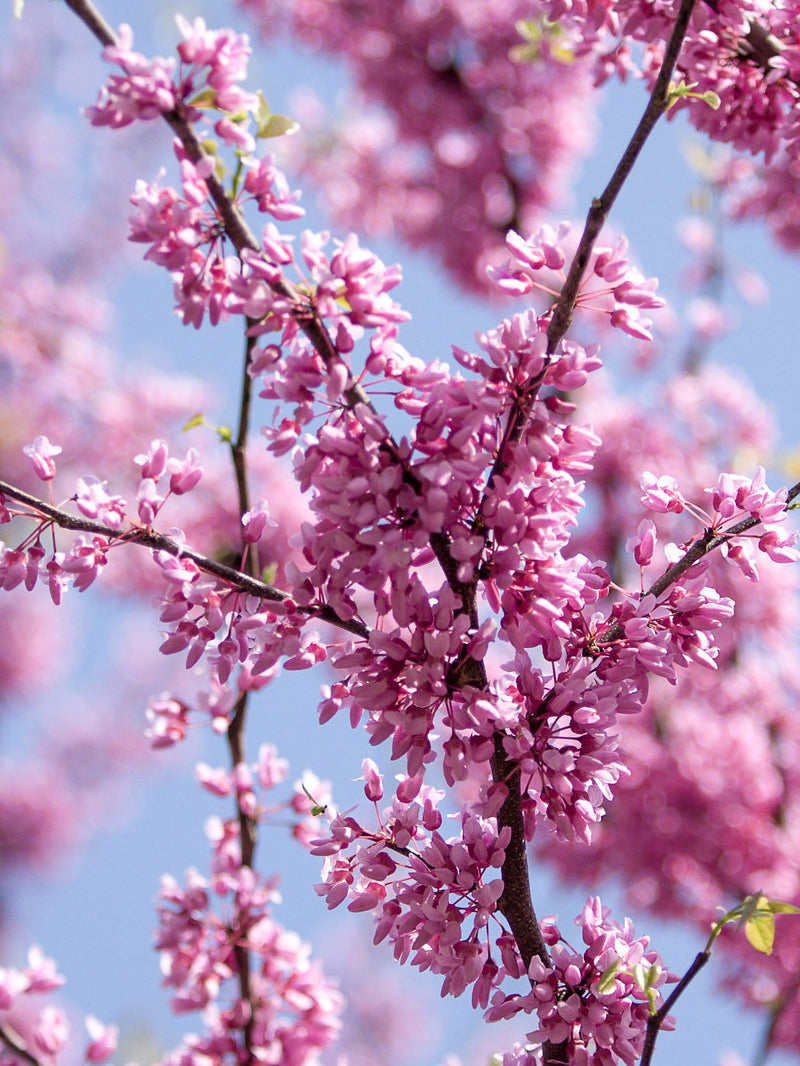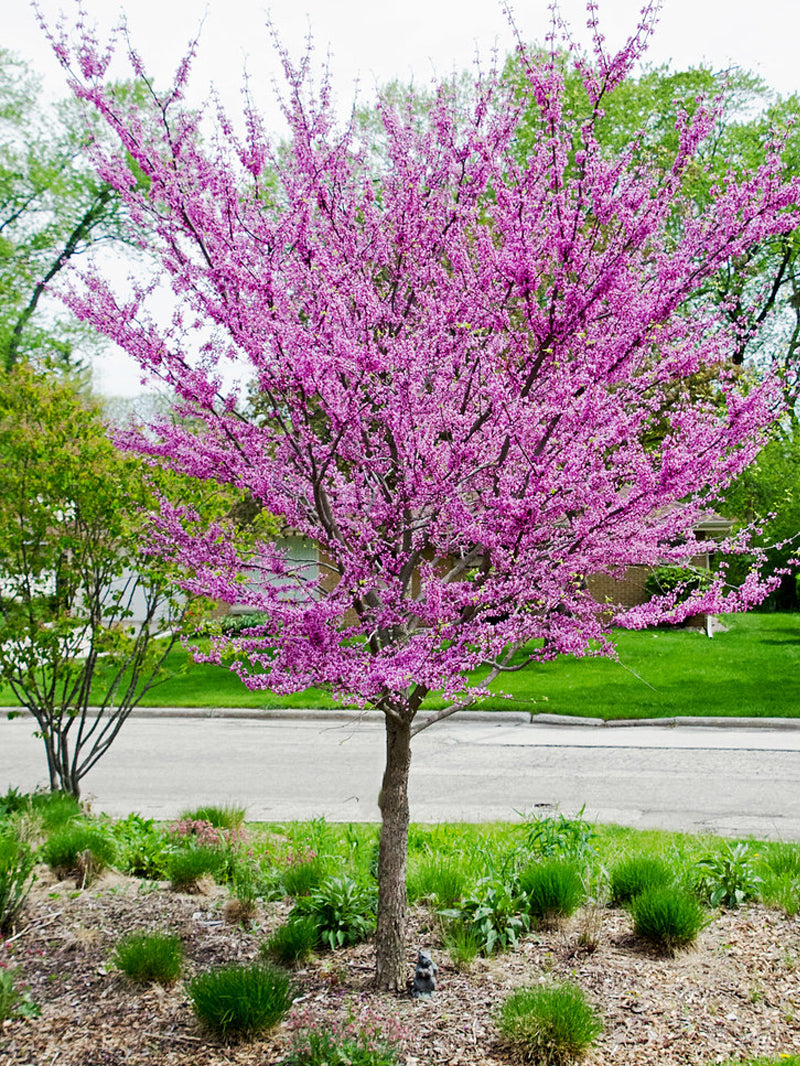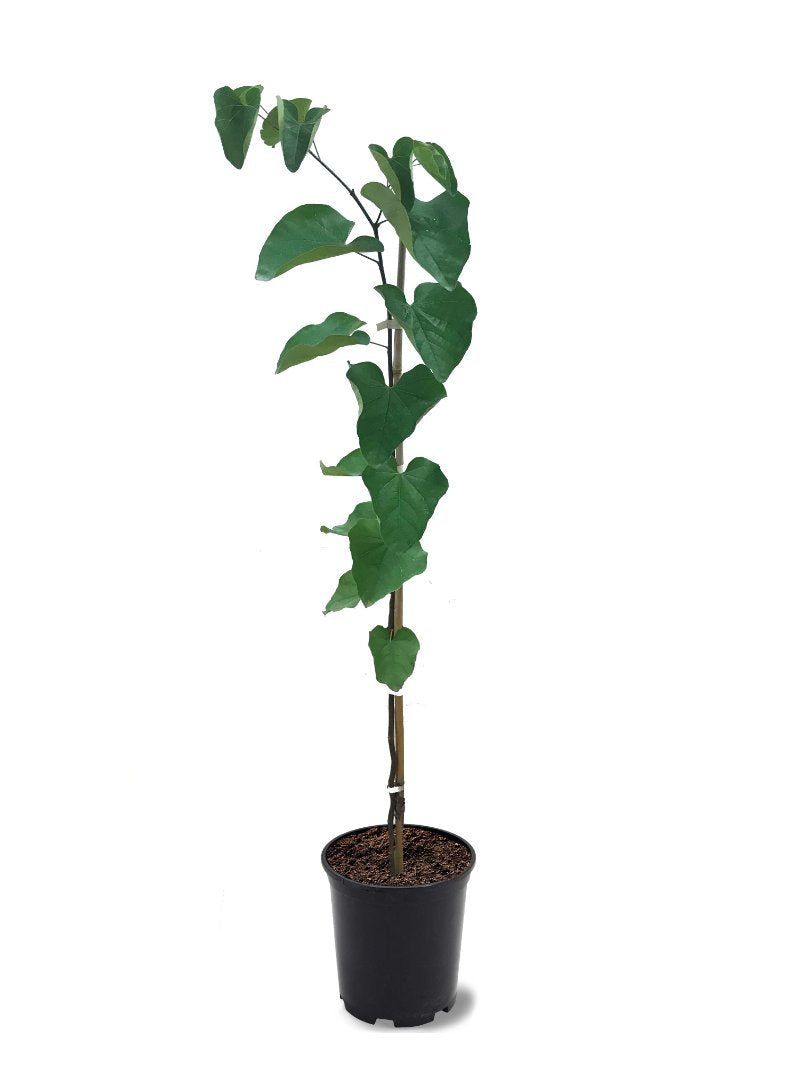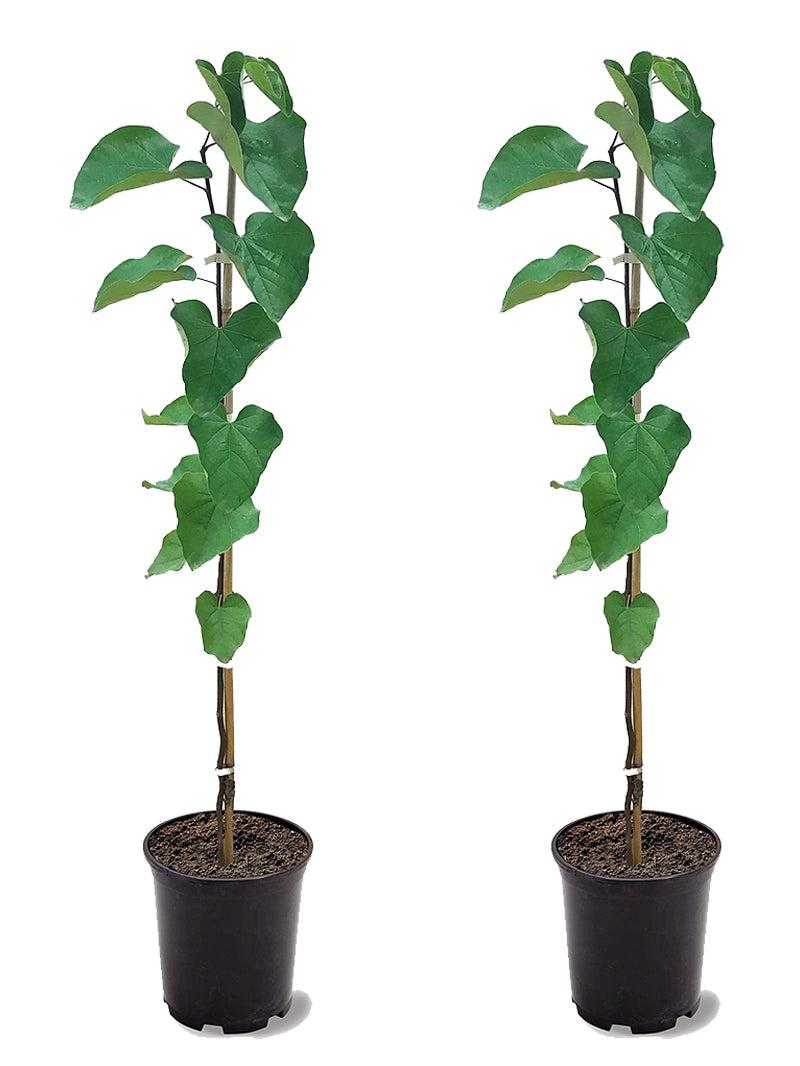Plant Quick Guide
Growing Zones:
Mature Height:
Mature Width:
Sunlight:
Spacing:
Growth Rate:
Flower Color:
Does Not Ship To:
Redbud - Eastern
USDA Hardiness Zones: 4-9.
Description
The Eastern Redbud is an outstanding deciduous ornamental tree native to the eastern United States. It produces clusters of pea-like, rosy pink flowers in early spring (March–April), with blooms typically arranged in groups of 4–10. As the season progresses, the reddish-purple leaves transform into a rich dark green before turning yellow in the fall, creating a beautiful, multi-hued display. This tree forms a spreading, graceful crown that reaches a mature height of 20–30 feet with a spread of 25–35 feet and exhibits a medium growth rate.
Unique Features:
- Striking Spring Blooms: Clusters of rosy pink, pea-like flowers appear early in spring.
- Seasonal Foliage Transformation: Leaves change from reddish-purple to dark green, then to vibrant yellow in fall.
- Graceful Form: Forms a spreading, elegant crown that adds visual interest to any landscape.
- Versatile Landscape Use: Ideal for naturalized areas, as a specimen tree, or grouped in a shrub border to contrast with evergreens or woodlands.
Mature Size:
- Height: 20–30 feet
- Spread: 25–35 feet
USDA Hardiness Zones:
- Suitable for Zones 4–9
Care Instructions:
- Planting: Choose a site with full sun to partial shade and well-drained soil for optimal growth.
- Watering: Water regularly during the first growing season to establish a robust root system; once established, it is relatively drought-tolerant.
- Fertilizing: Apply a balanced fertilizer in early spring to encourage healthy growth and abundant blooms.
- Pruning: Lightly prune after flowering to maintain shape and remove any dead or crossing branches.
- Maintenance: The Eastern Redbud is low-maintenance and well-suited to naturalized landscapes, thriving when contrasted with evergreens or integrated into woodland borders.
Enhance your landscape with the Eastern Redbud—a small yet colorful tree that brings early spring brilliance and year-round visual interest to any garden or naturalized setting.
More Information: REDBUD GROWING GUIDE
Shipping

At Plant Me Green we handle, package and ship the products you order with the utmost care. We ship your plants using FedEx Ground® the following business day after you have completed checkout.
We are now offering $15 flat rate shipping for all tree orders! Replacement tree shipping cost will be $15 per box. We still cannot ship to some states and US territories based off the Agricultural Laws that may be in place. Please see below for all exclusions.
If you have any questions concerning transit time for your order, please feel free to contact us at info@plantmegreen.com or toll free 855-817-5268.
Trees: Due to strict Agricultural Laws in place, we currently cannot ship to the following states: Alaska, Arizona, California, Hawaii. We cannot ship to Puerto Rico or international.
How to Plant

STEP 2) Once you've located the perfect spot, the hole you are digging must be at least double the width and as deep as the root system you are planting.
STEP 3) Remove the plant from the pot and place the root ball in the hole. The top of the root system should be level with the ground. Before placing the tree or shrub in the hole, use your hands to gently break up the root system.
STEP 4) Once the plant is in place, backfill the hole with native soil and any leftover potting material.
STEP 5) Pack down the soil to eliminate any air pockets.
STEP 6) When finished, water thoroughly.
Care Guide












